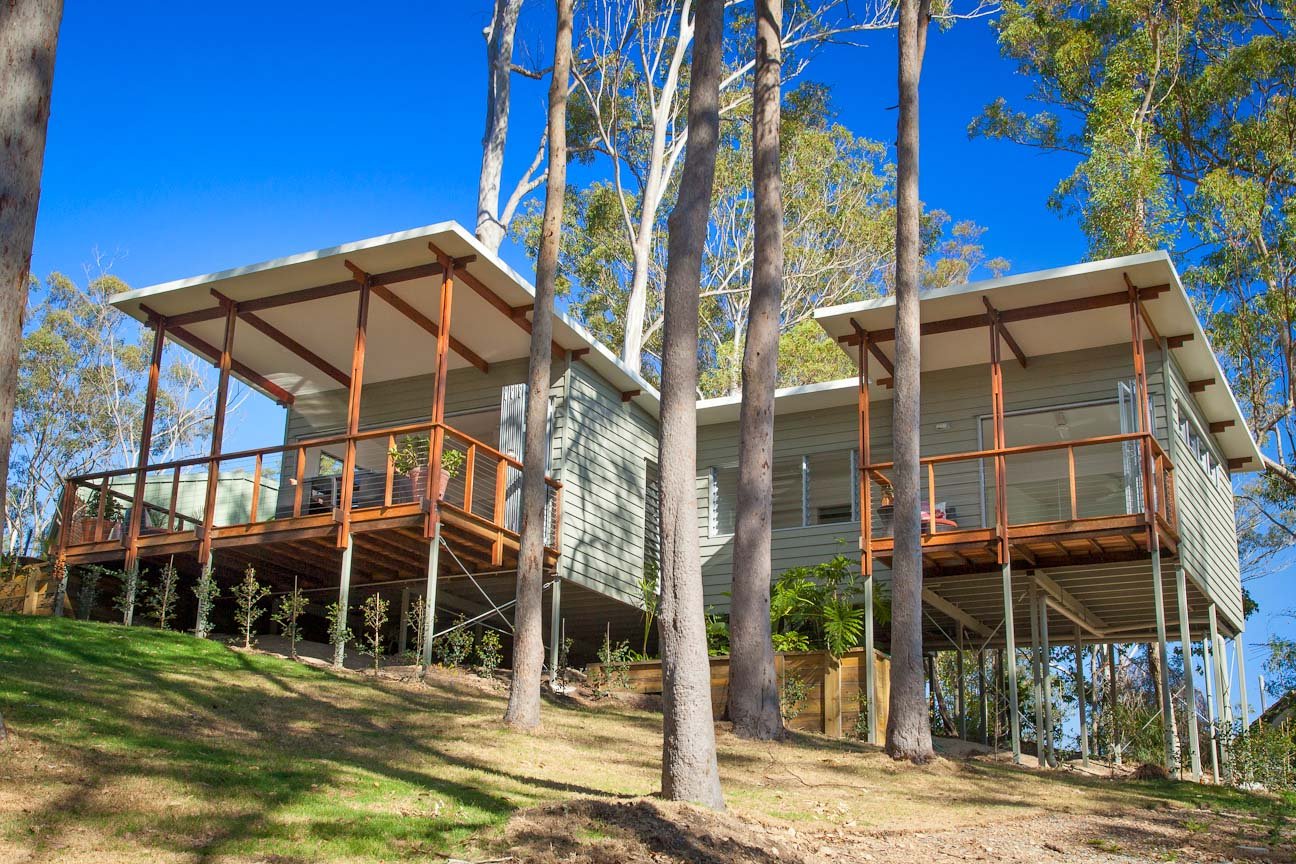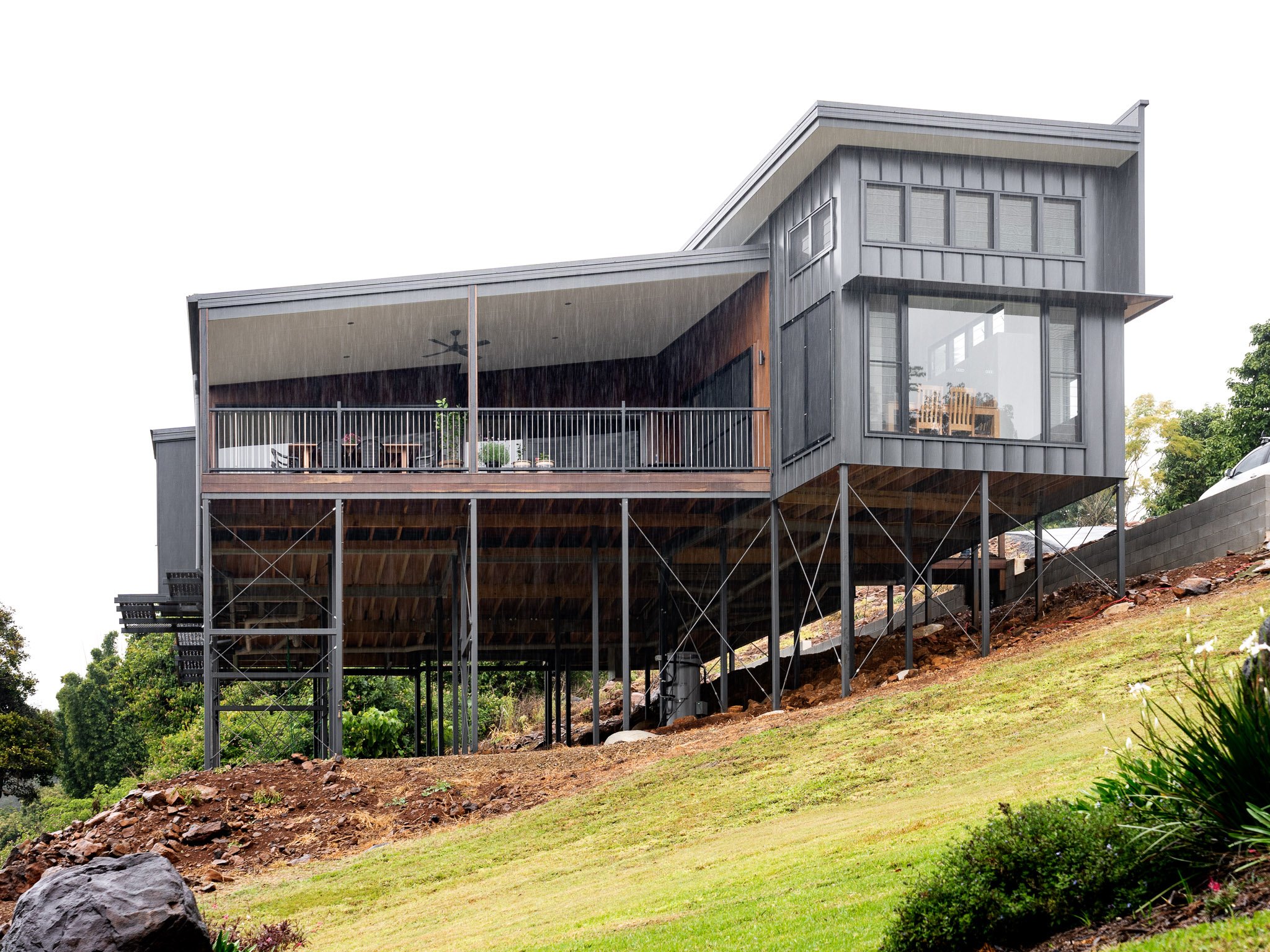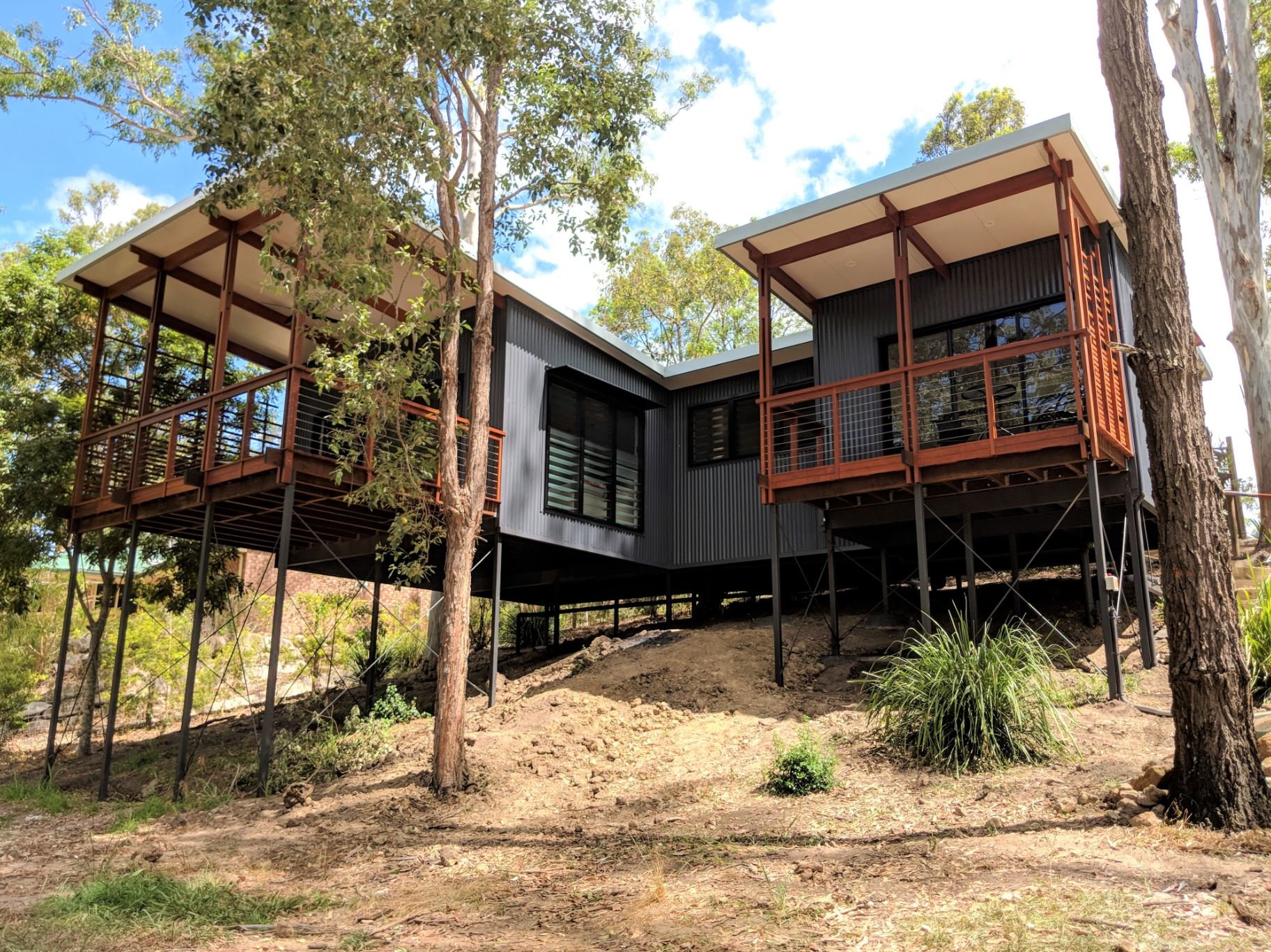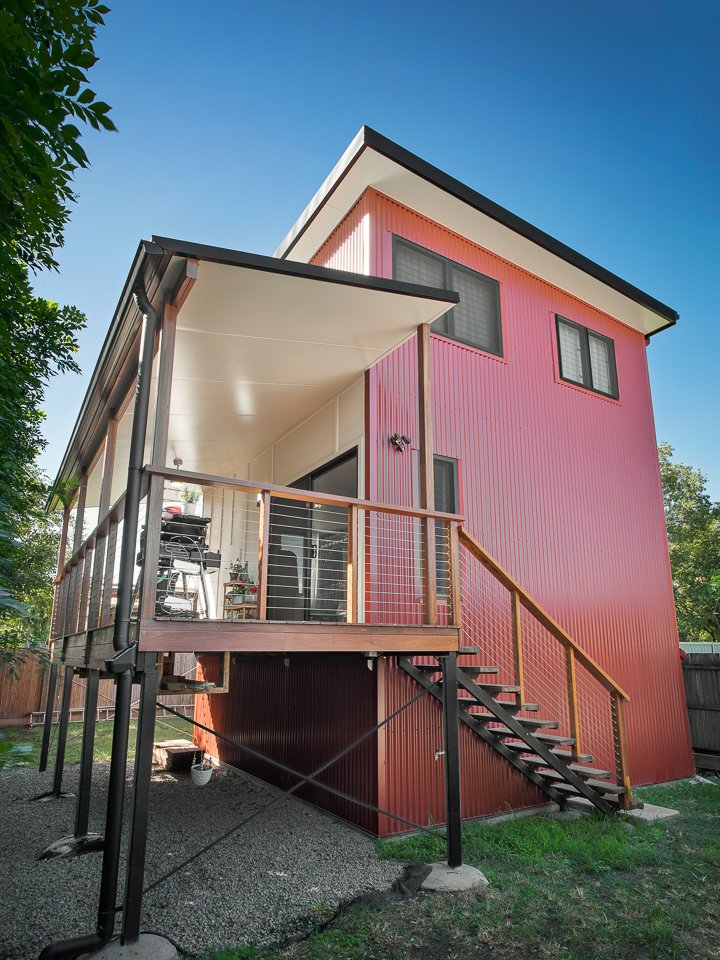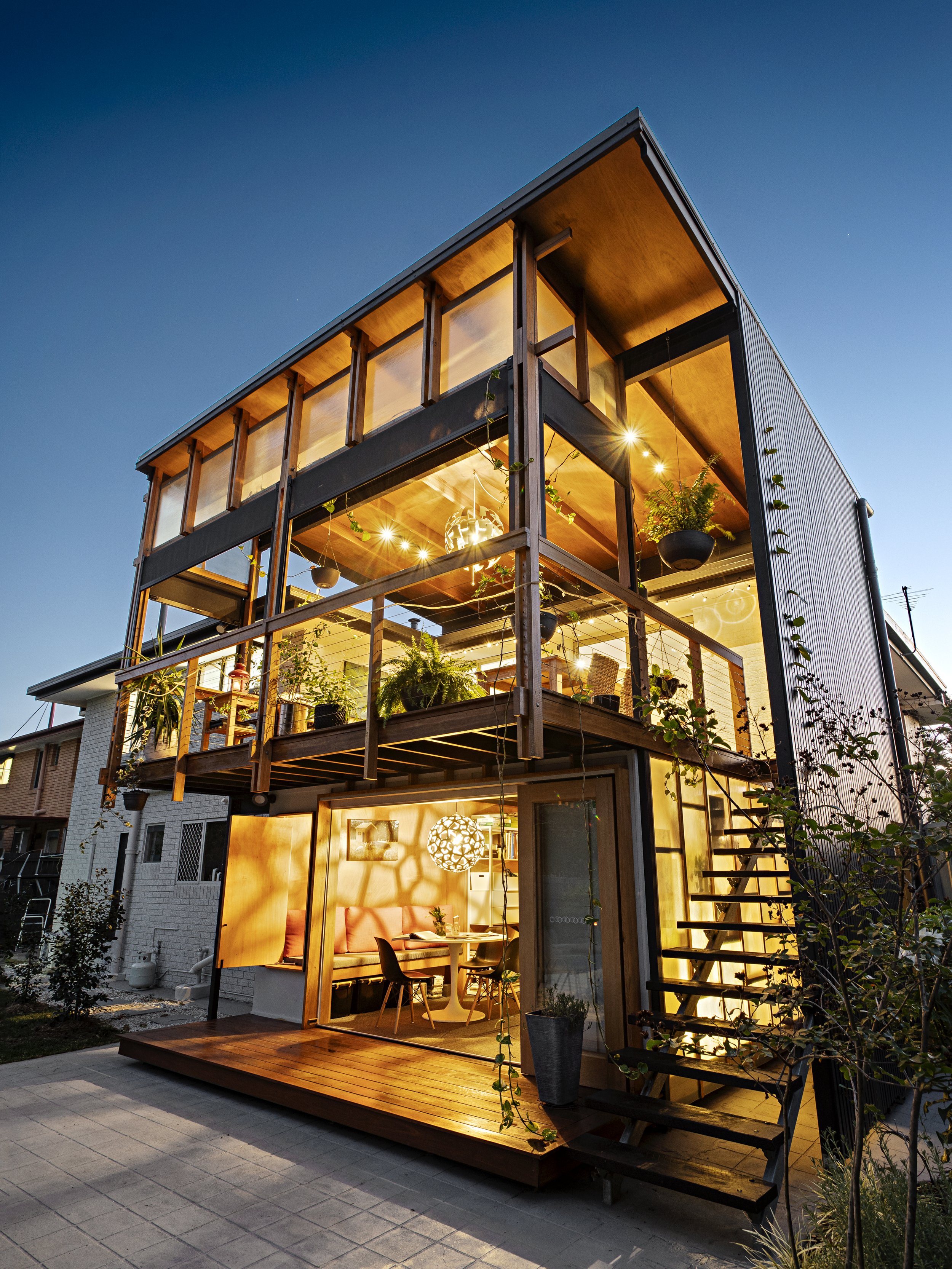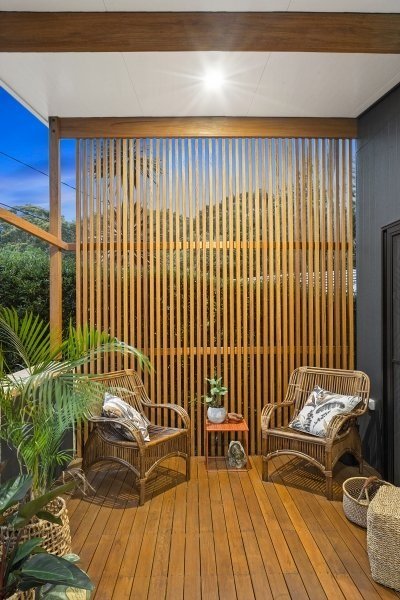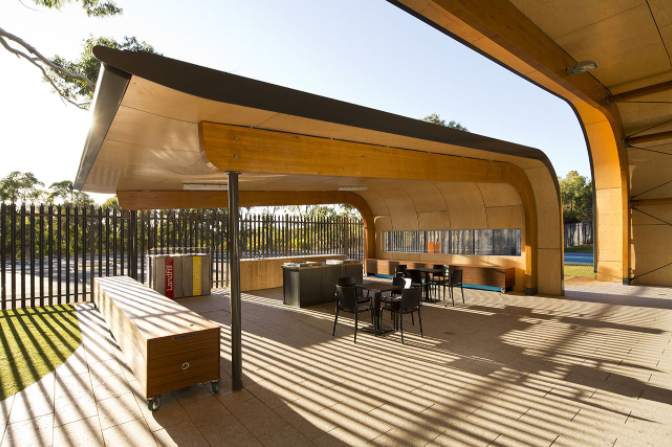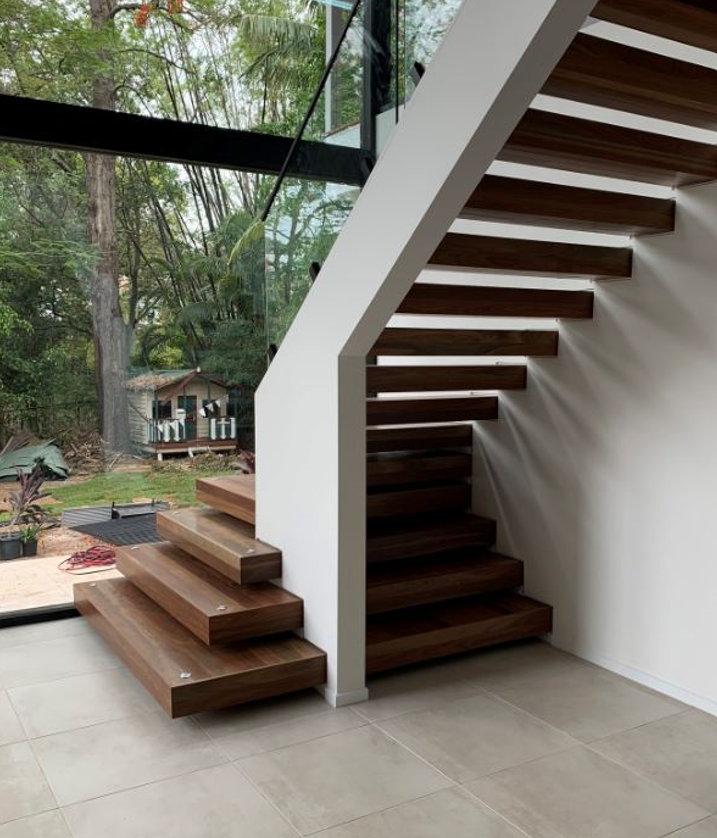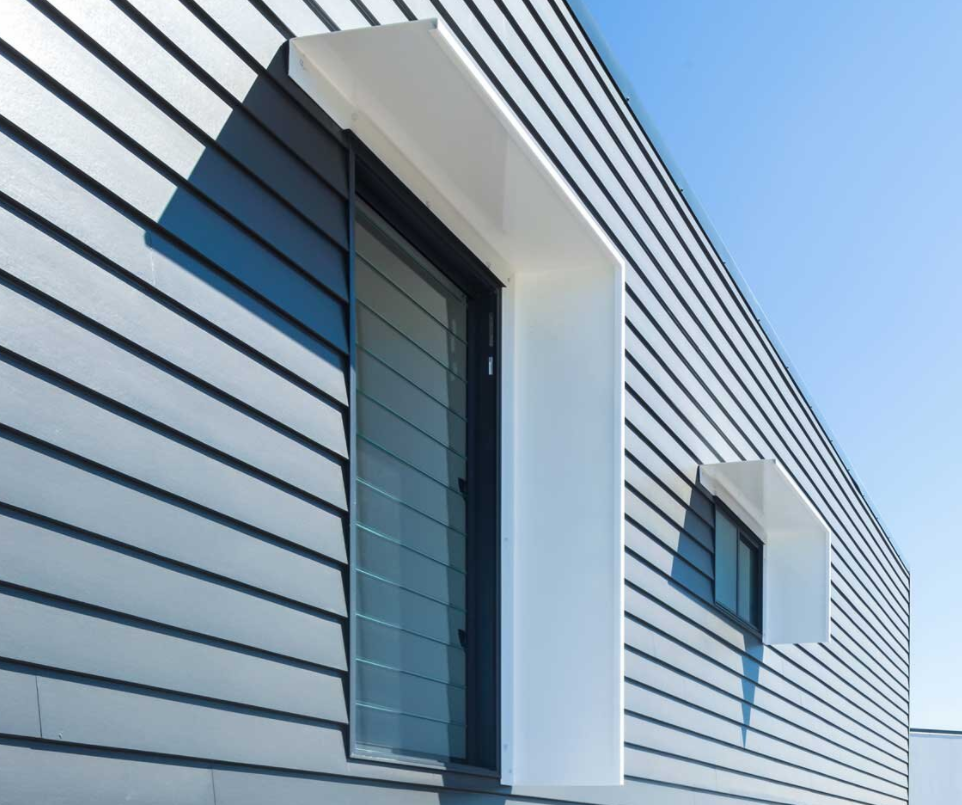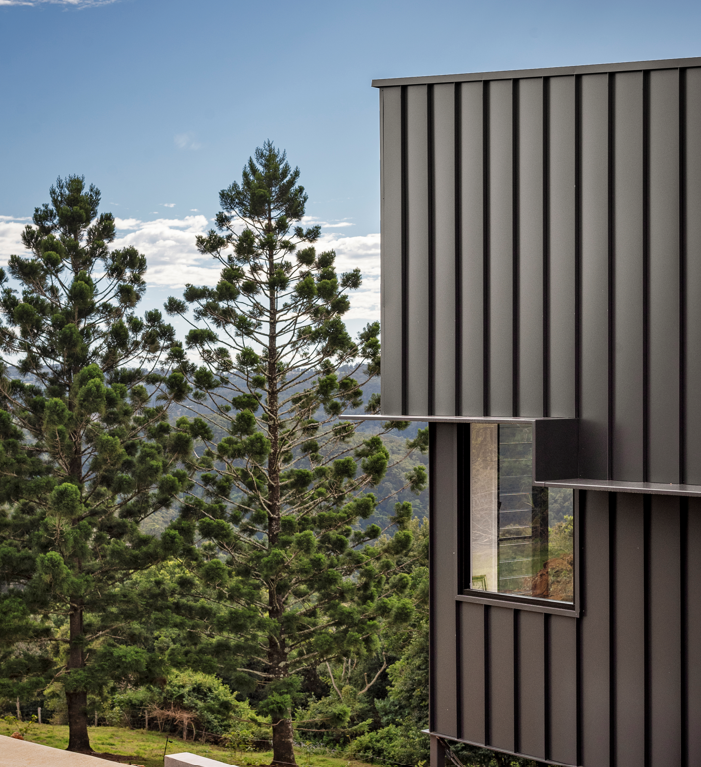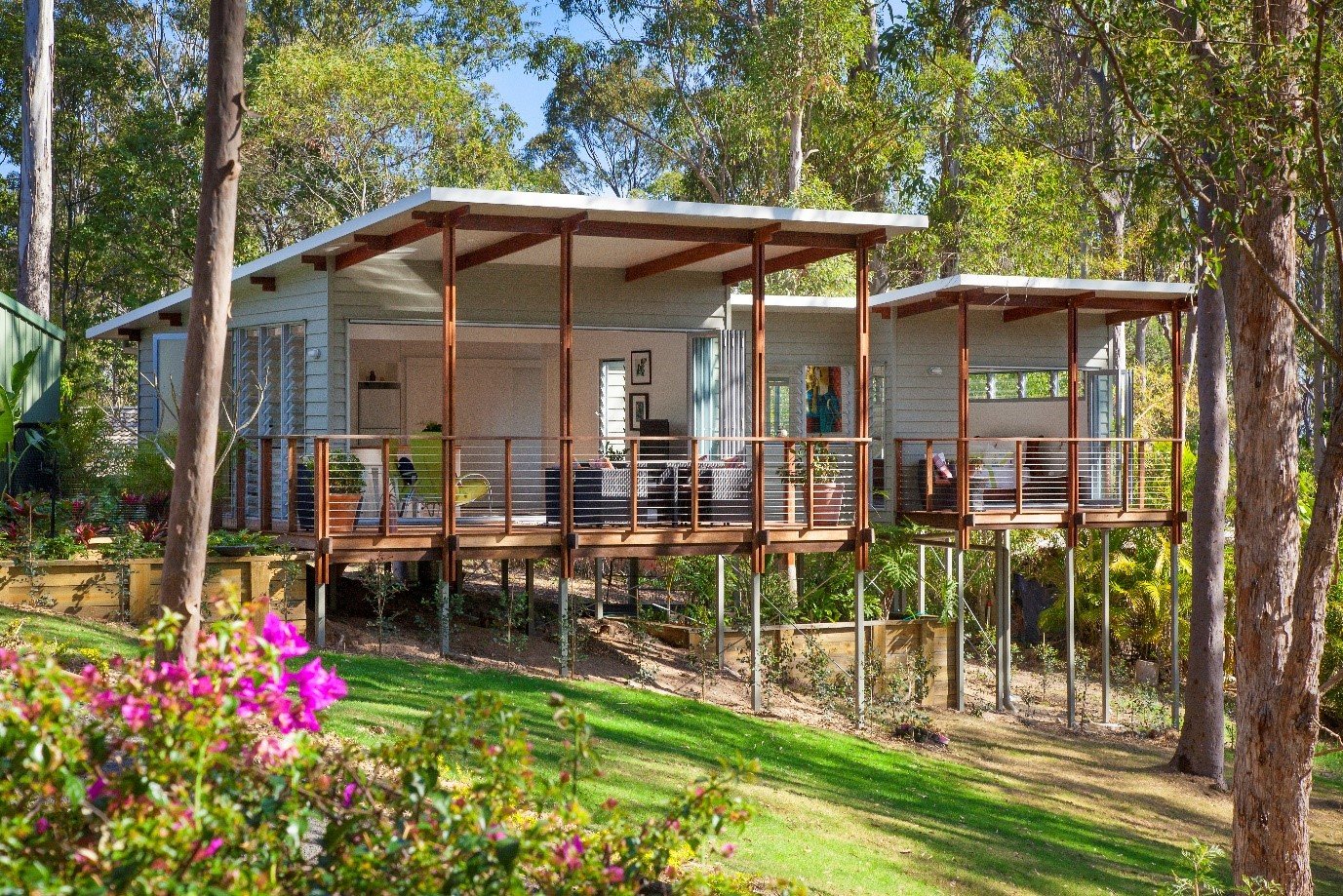Designing homes to withstand floods
The recent floods in QLD and NSW demonstrated the unpredictability of severe rain events. While many houses could not have been protected with water levels reaching to record heights, there are ways to build to minimise the flood damage to homes and belongings.
1. Elevation.
Elevation is the first step when designing for flood risk. The majority of our BAAHOUSE designs are purposefully elevated as many of our clients live on sloped properties in rural, tropical or hinterland areas, so require houses raised above ground level to reduce rain runoff. We also elevate homes to minimise clearance of the land as removing vegetation leads to erosion and flood run off. We construct with steel stilts into a concrete foundation.
2. House design.
You want to design your floor plan so the most liveable rooms are less affected if you do flood. Build a two-three storey house with the bedrooms, kitchen, dining and lounge on the higher level. On the lower level, have this area low maintenance with the least amenities and items that require moving or can withstand water damage; rooms such as garages, basements, spare rooms and laundry. Ensure power outlets are high, that any furniture is either movable or able to withstand flood water, and install metal or industrial cabinetry. Design larger and straight staircases to easily move items in a hurry. With these solutions, even if your house does flood, you can quickly prepare and move to higher levels, the clean up will also be quicker with less damage to your belongings.
3. Drainage and external structures/barriers
Even homes not built near creeks, rivers and waterways can be prone to flash flooding if the run off comes into your home from neighbouring properties, down driveways, or if your drainage and guttering cannot cope with the volume and flow of water. Think about installing larger drains with submersible pumps that push the water to the road, larger downpipes, and installing structural barriers like low concrete or brick fencing that border neighbouring properties. There will be an initial outlay but it may protect your belongings and home in the long term.
You can also strategically erect fences and screening to stop debri coming through entrances, garages, carports etc.
4. Flood proof walls.
If flood water does reach the walls of your house, ensure the walls are watertight through dry floodproofing. Use engineered brick treated with waterproof membranes, sealants and coatings to prevent water entering the house. Install flood proofing doors and windows. Use uPVC double and triple glazed doors: uPVC Doors - Double and Triple Glazed made in Germany or Australia are (sustainableconstructionservices.com.au).
For the interior walls, use washable closed-cell foam insulation in areas below the flood level. Coatings and sealants may also be applied to the foundation, walls, windows, and doorways to prevent flood water from entering the house through cracks.
5. Resilient building materials. We have included links below to some Australian suppliers so you can also read the benefits of using these products.
External and internal construction materials that are more durable and water resistant include:
Concrete foundations.
Steel stilts.
Engineered brick is manufactured by mixing crushed clay with water, formed and dried then fired in a kiln. This produces a denser, stronger and more water resistant product compared to other bricks (pgh or austral bricks How to Choose a Brick | PGH Bricks & Pavers Benefits of Bricks - Austral Bricks).
Rendered concrete block walls or core-filled block work walls.
Polished concrete or sealed floor tiles for internal flooring - this also makes the clean up easier.
Fibre cement internal wall lining Interior Lining Solutions | Fibre Cement Wall Lining by James Hardie.
Exterior Cladding Hardie™ Flex Sheet and Batten Cladding Solutions | James Hardie.
Fibreglass.
Marine grade Ply Marine Plywood (australply.com.au).
PVC Polymer Board material for cabinetry that may be prone to water damage Polymer Board | Cowdroy.
6. Maintenance
Maintenance - even if your home is flood resilient you will need to keep up with the maintenance such as ensuring roof tiles are repaired, well sealed, gutters and drainage are free from leaves, plant roots and debri.
Other maintenance includes:
Trimming trees and overhanging branches.
Checking and fixing corrosion, loose fittings.
Ensuring window sills and framing are water tight and resealed if necessary.
7. Landscaping. Modern developments often strip the land of any vegetation, houses built to boundaries leaving little room for gardens to adsorb rain water when we get torrential downpours. If able, install gardens to absorb run off water.
If you are interested in a small to medium home designed specifically for your site conditions, built with quality, sustainable and weather resistant Australian products, contact us on 07 31370222 for more information.

